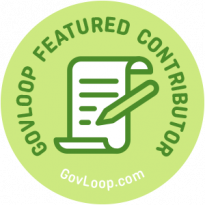From Winston Churchill’s moving “We Shall Fight on the Beaches” to Marin Luther King Jr.’s soul-stirring “I Have a Dream” and even Leslie Knope’s passionate pitch to save the lot behind Ann’s house in Parks and Recreation, the most memorable and impactful communications share one common thread: the power of storytelling.

These real and fictional speeches paint vivid pictures, evoke emotions and inspire action. In government, where complex policies and dry statistics often dominate, the art of storytelling can change how we connect with and motivate the public.
As a former government relations professional, I’ve witnessed firsthand how narrative and connection can turn the driest of policies into compelling calls to action. Let me share an example.
Narrative in Action: Government Relations Style
One memorable instance of using storytelling in government to drive change stands out from my early career. During a Capitol Hill visit, an arthritis advocacy group came to lobby for more comprehensive coverage of adaptive aids. Rather than merely sharing facts and figures, they brought their most persuasive assets — their personal experiences.
One woman, her hands visibly affected by rheumatoid arthritis, showed us a highly modified toothbrush. She explained how this custom creation — the handle wrapped with foam and tape and bent at specific angles — allowed her to perform a simple task many of us take for granted.
Suddenly, the abstract idea of “adaptive aid coverage” became a human story of dignity, independence and quality of life. The room’s atmosphere shifted noticeably. At that moment, we weren’t talking about budget allocations or insurance clauses. We were confronting the daily challenges faced by millions of Americans.
This is storytelling in action. It’s about illuminating the personal narrative, the glimpse into real lives. Storytelling bridges the gap between policies and human experiences, and anyone can tap into this superpower.
Tips for Effective Storytelling in Government
The key to developing a storytelling mindset is to shift your perspective from presenting information to creating a narrative that engages and motivates:
- Start with the “Why”. Ask yourself why your policy or initiative matters. What problem does it solve? How does it impact people’s lives? This forms the core of your story.
- Identify your characters. Put a human face on your initiative. Your characters might be constituents, community leaders or even future generations.
- Use vivid, concrete language. Replace jargon with specific, relatable details. Instead of “improve urban infrastructure,” say “fix potholes and reduce commute times.”
- Be a proactive listener. Pay attention to the stories of those affected by policies. Their experiences provide the material you need to create a powerful story.
Storytelling in Practice
Real-world application of storytelling in government can be seen in campaigns like New York City’s Vision Zero campaign, aimed at eliminating traffic fatalities. Instead of just presenting traffic statistics, they shared personal stories of accident victims and their families, making the issue more tangible and urgent for residents.
Another example is California’s water conservation efforts during drought conditions. Their “Save Our Water” campaign featured stories of everyday Californians finding creative ways to reduce water use, making conservation feel achievable and personal.
Remember that effective storytelling in government isn’t about fiction. It should always be about framing facts and data within a compelling narrative structure that makes your audience feel something.
The Lasting Impact of Storytelling in Government
Whether you’re advocating for policy change, implementing new programs or simply trying to better connect with constituents, challenge yourself to find the story in your work. Look for human elements, the challenges overcome, and the lives improved. In doing so, you’ll not only become a more effective communicator but also a more impactful public servant.
Jen Nieto is the founder of Civica Growth, a B2G content marketing consultancy helping GovTech companies, government contractors, nonprofit organizations, and industry leaders communicate effectively with public sector audiences. Jen’s unique insider perspective, honed over a decade in federal, state, and local government, allows her to create content for her clients that resonates with and motivates government decision-makers. She holds a Master’s degree in Political Management from The George Washington University and is deeply interested in digital modernization’s potential to make government more responsive, efficient, and collaborative. Off-duty, you’ll find Jen devouring the latest fiction novel or sipping lattes on her patio, possibly doing both at once.





Leave a Reply
You must be logged in to post a comment.